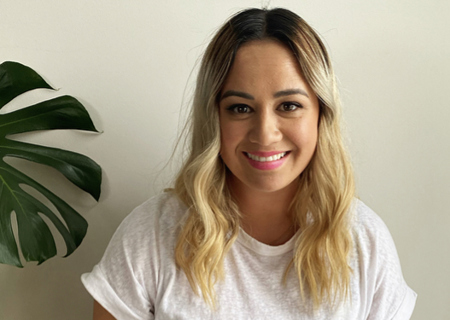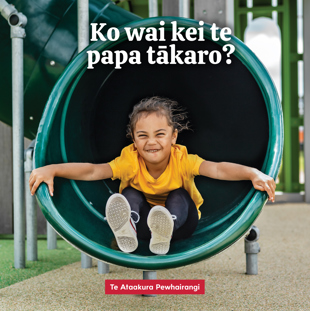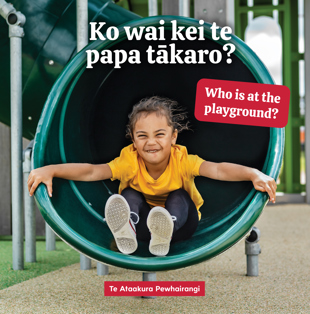Q1: Why did you choose the playground for your second book?
It’s a place that parents and tamariki go to all the time, and I wanted to share new vocabulary and sentence structures that parents can use with their children while they are at the playground.
Q2: What is your family’s favourite playground?
The local playground at Kopupaka is one of our favourites as it caters to both my 7 year old and 5 year old. It also has lots of space for scootering and riding bikes, as well as a big grassy area to enjoy a picnic.
Q3: What is the motivation for you to create books for young readers?
As a fluent Māori speaker, a mother and an educator, I understand the role quality books play in our children’s development, therefore the motivation behind creating this book has come from wanting to ensure that whānau have access to good, high-quality books for their children’s language development. There is a still a huge gap in quality reo Māori resources for whānau, so a huge motivation of mine is to create more resources for our children using places familiar to them.
Q4: What does your book offer that is different to other early childhood te reo board books?
In learning the language, asking questions is a great tool to encourage speaking. This book follows a pattern of questions which opens up a conversation between the parent or caregiver and the child. The book shows children on equipment that is seen in most playgrounds around Aotearoa, therefore creates new vocab for whānau to share with their children. This further broadens the child’s vocabulary around equipment that they’re likely to see at any local park, their kōhanga or playcentre and schools.
Q5: What did you enjoy reading most when you were young?
I enjoyed reading books that are very similar to the ones I write, as they are experiences that any child can identify with.
Q6: Interest in learning te reo seems to go from strength to strength. What would you like to see happen to support language learners?
I would like to see more high-quality resources available for those on their language journey.
Q7: What are the biggest challenges for families who are committed to a te reo first environment?
I think one will be access to total immersion education, such as Kōhanga Reo and Kura Kaupapa Māori schooling. Lots of families have great distances to travel to enable their children to engage in te reo Māori immersion spaces. It’s a long-term commitment that is needed by parents to ensure purposeful Māori language environments.
Q8: As a Māori student recruitment advisor at Massey University have there been challenges caused by COVID19 disruptions over the last couple of years?
We have seen a huge disruption in the way we do things. One being the lack of student engagement on our campuses. I know it’s critical for first year students to physically visit their local campuses to see and feel their new learning spaces. However, with challenges come new opportunities. Our team is getting very familiar with creating online events and zoom opportunities for students to engage with the university.
Q9: You and your brothers launched Kura Mō Ngā Mokopuna four days after New Zealand went into lockdown in March 2020 to help children having to learn from home. Two years on tamariki are still having their education disrupted. What online resources do you and your whānau enjoy using?
Our kura, Te Kura Kaupapa Māori o Hoani Waititi Marae, have created some amazing resources for our tamariki to use while learning at home. We are very grateful for the new technology and resources our teachers are using to ensure our tamariki are still learning.
Q10: What is your family’s favourite children’s book at the moment?
One of our favourite books at the moment is Mā wai e hautū, a book by Leo Timmers, translated into te reo Māori by Dr Karena Kelly.



